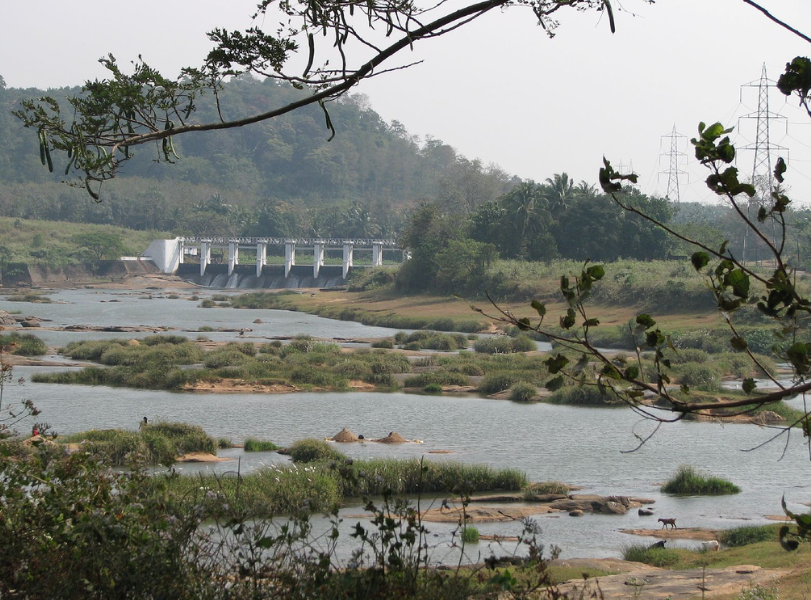
Gayathripuzha River – The Lifeline of Palakkad District
The Gayathripuzha River, also known locally as Gayathripuzha or Gayathri River, is one of the principal tributaries of the Bharathapuzha River, which is the second longest river in Kerala, India. Originating from the lush Nelliyampathi hills in the Western Ghats, the river plays a crucial role in the ecology, agriculture, and culture of Palakkad district, through which it flows for most of its course before merging with the Bharathapuzha at Mayannur.
Geographic Course and Tributaries
The river starts in the scenic, biodiversity-rich Nelliyampathi hills and flows through key towns and villages in Palakkad like Kollengode, Nenmara, Alathur, and Padur. It then passes through Pazhayannur before joining the Bharathapuzha River, with its final stretch lying outside Palakkad district. Gayathripuzha is the second largest tributary of Bharathapuzha in both length and water flow. Its basin is nourished by several important smaller rivers such as:
- Mangalam River: The largest and longest tributary, joining Gayathripuzha at Plazhy near the border of Palakkad and Thrissur districts.
- Ayalurpuzha
- Vandazhippuzha
- Meenkarappuzha
- Chulliyar
These tributaries contribute to the river’s flow and support the extensive irrigation network in the region.
Importance for Irrigation and Agriculture
The Gayathripuzha River system supports a network of dams and irrigation projects that are vital for Palakkad’s predominantly agrarian economy. Palakkad is known as the “Granary of Kerala” due to its extensive paddy fields, and the river’s waters are essential for sustaining this agricultural productivity.
Key dams across the river and its tributaries include:
- Mangalam Dam: Built across the Cherukunnapuzha (a tributary of Mangalam River), it supports irrigation for over 3,440 hectares in Alathur taluk. The dam was commissioned in 1957, and its canal system was completed in 1966.
- Chulliyar Dam: Constructed in 1960 across the Chulliyar River, a tributary of Gayathripuzha, this dam is another major irrigation project in Palakkad. It is located near the scenic Nelliyampathi mountains, enhancing the area’s natural charm.
- Cherakkuzhy Dam: Built near Pazhayannur across the Gayathripuzha itself, it further aids irrigation and water management.
These dams and their canal systems are critical in managing water resources, especially given the river’s non-perennial nature.
Environmental and Hydrological Characteristics
Like the Bharathapuzha, the Gayathripuzha is a seasonal river that depends on the monsoon and doesn’t flow all year. This makes water supply, farming, and local ecosystems vulnerable. The river also faces issues like sand mining, which harms the riverbed and wildlife habitats. In recent years, even with good monsoons, its flow has reduced raising concerns about poor water management and the need for better conservation efforts.
Cultural Significance
The Gayathripuzha River holds cultural and religious value in Palakkad. A key landmark on its banks is the ancient Thrippalur Mahadeva Temple in Alathur, dedicated to Lord Shiva, Krishna, and Narasimha. This historic temple is also mentioned in Malayalam literature. The river has influenced local traditions, festivals, and daily life, showing the strong bond between the people and their natural surroundings.
The Gayathripuzha River is more than just a river it supports farming, wildlife, and the culture of Palakkad. But since it doesn’t flow year-round and faces environmental threats, there’s a need for sustainable efforts to protect it for the future.